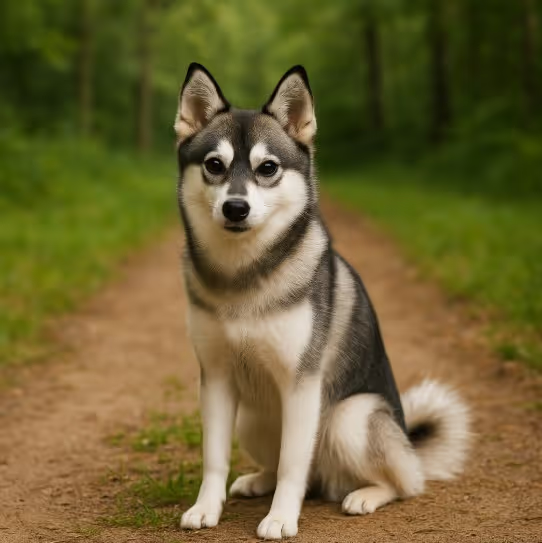The Alaskan Klee Kai is a small, intelligent, and energetic companion breed that resembles a miniature Siberian Husky. Developed in the 1970s to be a scaled-down version of a northern working dog, the Klee Kai is alert, loyal, and often reserved with strangers—making it an excellent watchdog. While compact in size, they carry the bold spirit and striking looks of their larger cousins. This breed thrives in active homes and is best suited for experienced dog owners who understand their high energy and independent streak.

The Alaskan Klee Kai was developed in the 1970s by Linda Spurlin in Alaska. She sought to create a smaller companion-sized version of the Alaskan Husky by selectively breeding Siberian Huskies, Alaskan Huskies, American Eskimo Dogs, and Schipperkes. Officially recognized by the United Kennel Club in 1997, the breed quickly gained popularity among northern breed enthusiasts. The name “Klee Kai” comes from an Inuit term meaning “small dog.” Unlike their sled-pulling ancestors, Klee Kais were bred strictly for companionship.
Alaskan Klee Kais are compact and well-proportioned with a spitz-like appearance, featuring erect triangular ears, a curved tail, and a double coat. They have expressive almond-shaped eyes that may be blue, brown, or even one of each (heterochromia). Their facial mask is a signature feature. Coat colors include black and white, gray and white, red and white, or all white. There are three size categories: Toy (≤13"), Miniature (13–15"), and Standard (15–17").
Despite their small size, the Klee Kai has a thick double coat that sheds year-round and more heavily during seasonal changes. Brush 2–3 times per week with a slicker brush and undercoat rake to manage shedding. They are naturally clean and have minimal odor, requiring occasional baths every few months. Pay attention to regular nail trimming and ear cleaning.
Though smaller than a typical northern breed, Klee Kais are very active and require daily exercise to stay happy and well-behaved. Plan for at least 45–60 minutes of activity, including brisk walks, indoor play, or agility training. They enjoy interactive games and mental stimulation like puzzle toys and scent games.
Highly intelligent but independent, the Alaskan Klee Kai benefits from early training and socialization. Use positive reinforcement methods and avoid harsh discipline. They may be wary of strangers, so consistent exposure is key to building confidence. Crate training is recommended to help with housebreaking, as some individuals can be difficult to potty train.
Feed a high-quality kibble formulated for small, active breeds. Because of their fast metabolism, small meals twice daily are recommended. Monitor calorie intake to prevent weight gain. Some Klee Kais have sensitive stomachs, so grain-free or limited-ingredient diets may be beneficial. Always provide fresh water and avoid overfeeding with treats.
The Alaskan Klee Kai is generally healthy but can be prone to:
Reputable breeders test for these conditions, and annual veterinary exams are recommended. Maintaining a healthy weight and routine exercise can help minimize joint issues.
Because they are a rare breed, expect to be placed on a waitlist if adopting from a reputable breeder. Look for breeders affiliated with the Alaskan Klee Kai Association of America (AKKAOA). Breed-specific rescues may occasionally have available dogs.
Questions to ask:
Is the Alaskan Klee Kai a good apartment dog?
Yes, their small size makes them suitable for apartment living, but they need regular physical and mental stimulation.
Is the Klee Kai a mini Husky?
Not exactly. While similar in appearance, the Klee Kai is its own distinct breed developed with multiple ancestors—not just Huskies.
Do they bark a lot?
They are vocal and will alert bark. Early training can help curb excessive noise.
Are they good with children?
Yes, with proper socialization. Best suited to older children who respect boundaries.
How much does a Klee Kai cost?
Expect to pay $2,000–$3,000+ depending on size, pedigree, and breeder reputation.